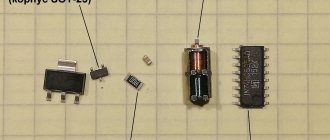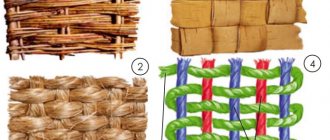We wear clothes and use other textile products, but sometimes we don’t think about the process of creating them. They are made from materials for the production of which a weaving machine is used. This device has been used for several thousand years and has its own history and characteristics.
What is a loom?
It represents the equipment needed in the textile industry. A weaving loom is a device on which fabrics of different textures and compositions are produced - cotton, wool, silk, linen and other fabrics. These can be woven, smooth, pile materials used for the manufacture of clothing, household textiles, carpets and other products. Another name for such a device is krosna.
Weaving loom device
The design has a number of features due to its functionality. The weaving mill has the following design:
- Its main parts are healds - the working part in the form of moving frames.
- These elements are fixed using wire pins.
- The device is equipped with a holder for attaching threads.
- The parting hook is responsible for threading the loops with the device.
- With the help of embedded strips, the smoothness and evenness of the woven bases are maintained.
How does a loom work?
The principle of its operation is simple. Whether a home loom or an industrial one is used, the algorithm for its operation is as follows:
- Threads are threaded through the eyes of the healds.
- When the first frame is raised, the even threads are raised, and the odd ones are at the bottom.
- Between their rows a shuttle is thrown, in which there is a bobbin with a transverse thread (weft). It unwinds and then lies between the threads of a woven base consisting of longitudinal threads.
- After moving the shuttle, the first raised bar returns to its place.
- When a transverse thread is woven into a warp consisting of longitudinal threads, it is tightly fixed to the latter by means of a metal comb. This is how a loom equipped with a reed works.
- The next step is to raise the second heddle to move the odd threads over the even ones. The transverse fibers are laid on the longitudinal ones by throwing the shuttle in the opposite direction.
- Odd warp threads are covered by even ones due to the fact that the heald is lowered.
- The fiber is nailed with a metal comb.
Remez to help
The master performed hundreds of movements, alternately passing the wefts above and below the thread. Soon they figured out how to halve the amount of work: the ends of the even threads were tied to a horizontal stick - a razor . Raising the hem with half the warp threads, the craftsman threw the weft under it, passing at once under all the even threads and over all the odd ones - the row was woven. But the odd threads cannot be lifted with another hedge - they collided with the first hedge. The reverse row was woven in the old way.
The problem was solved by turning the first hedge into a dividing stick , which was used to lift the even threads in order to insert the wefts under them. The odd numbered threads were tied to the second hedge with threads - heddles . The hems passed between the even threads and, when the second heddle was raised, they pulled the odd threads forward, allowing the weft to be passed under them as well. So alternately the even and odd warp threads appeared at the top, and the weft was freely thrown in both directions. The work has become hundreds of times easier.
Loom - history
People learned to weave mats from reeds and tree branches, after which they mastered a similar technique using fibers. Important points in the history of the development of the device:
- The first loom was a vertical one, and it was invented in 1550 BC. e. It was a primitive device on which longitudinal threads hung on one side and transverse threads on the other. Weaving took a lot of time and effort.
- In 1733, John Kane, an English clothier, invented a mechanical shuttle. The weaving machine was equipped with it for throwing threads. Thanks to this invention, labor and time costs for the production of canvases were reduced, and it became possible to produce them in large quantities.
- In 1785, Edmund Cartwright patented a foot-operated machine tool. The device was refined by other inventors and was improved by the 30s of the 19th century.
- In 1879, Werner von Siemens created an electrical device.
- In 1896, the automatic loom was introduced. Modern devices are descendants of this device.
Ancient Egypt and weaving
Egypt is rightfully considered the birthplace of flax. The natural conditions of the Nile Valley contributed to the cultivation of this plant. Egyptian textiles were widely known and exported to Syria and Mesopotamia. The skill of Egyptian weavers has reached high perfection.
The appearance and properties of ancient Egyptian flax can be judged by samples of fabric that have survived to this day. 240 m of the finest yarn, almost invisible to the eye, weighed only 1 g. The weaver felt such a thread only with his fingers.
In terms of thinness, Egyptian linen was not inferior to natural silk: through five layers of linen fabric worn on a person, his body was clearly visible.
Types of looms
There are several classifications of the device. In accordance with the principle of operation of the mechanism, it is divided into the following types:
- handloom;
- mechanical;
- semi-mechanical;
- automated.
Depending on the method of laying the thread, the device can be:
- pneumatic;
- hydraulic;
- foil
Air loom
This type of device is used for the production of materials from yarn and chemical complex fibers. A modern pneumatic weaving loom has the following feature - the transverse thread is pulled into the shed using the pressure force of compressed air, which is supplied through pipelines from the compressor. This type of device is used for the production of simple weave fabrics with a surface density of maximum 200 g/sq.m.
Hydraulic loom
This type of device is used for the manufacture of synthetic materials that are not wetted by water. This weaving machine has a design that involves drawing the thread through a drip jet of water. The latter is ejected from the nozzle under pressure. The speed of laying the transverse thread on such a device can reach 35 m/sec.
Rapier loom
This type of device is used for the production of both synthetic and natural fabrics. With its help, technically filtered and mixed gray fabrics are produced. You can use a rapier loom for rugs and other items with a rough texture. On this device, the transverse thread is pulled into the shed by means of grippers that are fixed at the ends of rapiers (flexible metal strips) that perform reciprocating movements.
From basket to canvas
Look at the fabric - individual threads are intertwined there, like rods in a basket. Weaving is much older than weaving. People were still sewing clothes from skins, but they were already weaving baskets from flexible rods, baskets from bast (the soft part of the bark), and mats from plant stems. Weaving technology was also used in the manufacture of fabrics; it became the basis of weaving .
How to choose a loom?
What criteria should you pay attention to when purchasing:
- Table loom or floor loom. The first option has less weight and size compared to the second. Due to its compactness, it takes up less space and is more convenient to transport. It is easier to work with a floor-standing type of device. Using such a weaving loom, you can use different accessories for this activity.
- If you plan to create carpets or tapestries, it is better to choose a vertical model of the device. For the production of ordinary materials, a horizontal weaving loom is suitable.
- For ease of use, you should choose an automatic device, because in the mechanical version you will have to manually load the bobbin into the shuttle periodically.
- Reed density. It is measured by the number of threads per 10 cm of fabric base. The more there are, the finer the fiber can be used for weaving. For example, a reed with a density of 20/10 is used for processing thick woolen threads, and 40/10 for thin fibers. Density 30/10 is considered universal - it can be used to weave materials from threads of medium thickness and thick threads.
- Machine width. It is selected depending on the width of the fabrics produced. The optimal figure is 50-70 cm, but if the device is purchased for a child, it will be more convenient for him to work with a device 20-40 cm wide.
Increase in sales from 30% through system marketing (specialization - light industry)
I specialize in systems marketing. Its customization allows clothing manufacturers and designers to obtain real results and reach speeds 2-3 times higher than current figures.
Yulia Andreeva
We have been working with Irina Borodavko and her team for only a couple of months and are very pleased, no complaints, only positive impressions. Everything is clear, on time, with results assessed, new methods of promotion and development are regularly proposed. We will continue cooperation!
Alexey Demkin
Thanks to Irina Borodavko and her team for their excellent work in creating our company’s landing page. Advertising effectiveness increased by 24%. The work was completed on time, taking into account all our wishes and suggestions. We express our gratitude and recommend you for cooperation!
The end of an era: will shopping centers close en masse in Russia?
Online sales of clothing and footwear grew 36% year over year
“PRICE OF SUCCESS” – a film about the COMMUNICATION PLATFORM of the 53rd Federal Fair “Textillegprom”
Anna Lebsak-Kleymans: The careless approach to buying clothes is a thing of the past
Fashion retailers are losing traffic
DIY loom
To create your own device you will need:
- twine (you can use cotton thread);
- scissors;
- wooden slats;
- a picture frame made of wood, the width of which will be the width of the loom.
How to make a loom with your own hands?
- Using a double knot, secure the thread or twine to the lower left corner of the frame, after which you need to pass the ball through it and throw the thread through the top bar. Bring the thread down to the bottom bar. The movements are performed as "8". Make sure that the thread is tensioned evenly and does not sag.
- Using such a home weaving loom, you set the width of the product by the width of the base of threads or twine. When you have finished stretching, secure the second edge with a double knot.
- Divide the threads into 2 parts by placing a wooden strip between them where they cross.
- Move the bar to the top of the frame.
- The device is ready and you can use it.
Links[edit]
Quotes [edit]
- Marsden 1895, p. 64
- Jump up
↑ Marsden 1895, pp. 70.71 - Jump up
↑ Marsden 1895, pp. 88–95 - Jump up
↑ Miller & Wild 2007, p. 10 - Jump up
↑ Hills 1993, p. 117 - Mass 1990
- Collier 1970, p. 111
- ↑
Anna Clarke (1997),
Fighting for the Pants: Gender and the Making of the British Working Class
, University of California Press, pp. 32ff, ISBN 0520208838 - Geoffrey Timmins (1993), The Final Shift: The Decline of Handloom Weaving in Nineteenth-Century Lancashire
, Manchester University Press ND, p. 19ff, ISBN 0719037255 - Gail Fowler Mohanty (2006), Labor and the Loom Workers: Mechanization and Looms, 1780-1840
, CRC Press, pp. 114ff, ISBN 0415979021 - Neil J. Smelser (2006), Social Change in the Industrial Revolution: Application of Theory to the British Cotton Industry
, Taylor and Francis, pp. 208–209, ISBN 0415381371 - "Lucy Larcom (1824-1893)". National Women's History Museum. Retrieved March 25, 2014.
- Crocker, Charles (2011). "Weaving and Knitting". ILO Encyclopedia of Occupational Safety and Health
. Archived from the original on 2014-03-24. Retrieved March 23, 2014.
Bibliography[edit]
- Collier, Anne M. (1970), Handbook of Textiles
, Pergamon Press, p. 258, ISBN 0-08-018057-4 - The Hills, Richard Leslie (1993), Steam Power: The History of the Stationary Steam Engine, Cambridge University Press, p. 244, ISBN 9780521458344
- Jenkins, Geraint (1972), Geraint Jenkins (ed.), The wool textile industry in Britain, London and Boston: Routledge Keegan Paul, ISBN 0-7100-69790
- Marsden, Richard (1895), Cotton Weaving: Its Development, Principles and Practice, George Bell and Sons, p. 584, archived from the original on 2018-06-29, retrieved 2009-02-28
- Massa, William (1990), "The Decline of the Technology Leader: Capability, Strategy, and the Shuttleless Weave" (PDF), History of Business and Economics
, ISSN 0894-6825 - Miller, I; Wild, C (2007), Rachel Newman (ed.), A&G Murray and the Cotton Mills of Ancoats
, Lancaster: Oxford Archeology North, ISBN 978-0-904220-46-9
How to use a loom?
If this activity is new, consider these recommendations:
- For the first items you produce, it is better to use medium-thick wool threads or mixed threads. They are springy and have an optimal level of stretch, which compensates for the shortcomings of filling.
- If you have not previously used looms for home crafts, do not start working with thin fibers - flax, cotton options, silk.
- For the base you need to use durable raw materials. If it is fluffy, slippery, and breaks easily, it can only be used for transverse rows.
- When winding the warp onto the shaft, you need to lay strips of cardboard at intervals of 3-5 cm between the rows of threads to distribute them evenly.
- When changing warp fibers, check the binding knot for strength.
- When changing the ends of the transverse threads, do not tie them together. They are fixed by overlapping each other (3-4 cm).
Threading the loom
It means winding the warp onto a beam. A mechanical loom is threaded like this:
- Secure a strong thread to the far bar of the reed. The length of the first should exceed the length of the second by 15 cm. Attach its second end to a thin hook.
- Insert the nose of the hook into the first tooth of the reed, which is located closer to the bar to which the thread is tied.
- Untie the threads that secure the pharynx, thread them onto the middle, index and thumb of your left hand.
- With your right hand, separate the first pair of threads from the warp, maintaining the crisscross weave. Place it on your ring and little fingers. Pick up the loop with your hook, pull it through the reed, and throw it onto the thread that was fixed first. Continue these steps until you reach the desired width of the future canvas. Pull the warp threads into the reed at intervals of 1 tooth.
- Straighten the loops on the thread, lift it and insert them into the stick, which should be parallel to it.
- Untie the threads that secure the cross shed and pull it through the reed. Transfer the resulting design to the loom by placing a stick in the groove of the beam and tying it to it.
- For further actions you will need the help of two people. One, standing near the beam, winds the warp with the help of a brace, rotating the shaft. The other two pull it and straighten it.
From fiber to thread
Coarse twigs or stems were not suitable for making fabrics; thin, even and strong threads were needed. Since ancient times, people have obtained fiber from the stems of flax, nettle, hemp, from the fleecy pubescence of cotton seeds, and from animal wool.
The fiber was spun into thread . A lump of fiber was mounted on a spinning wheel - a stick with a slingshot. A bundle of fibers was pulled out of the lump and attached to a spindle a spindle whorl attached to it . The spindle was twisted and released. Hanging in the air, it quickly rotated, twisting the fiber into a thread. The rotation was supported by the weight of the spindle whorl, and a twisted thread was pulled out of the fiber. The finished thread - yarn - was wound on a spindle.











